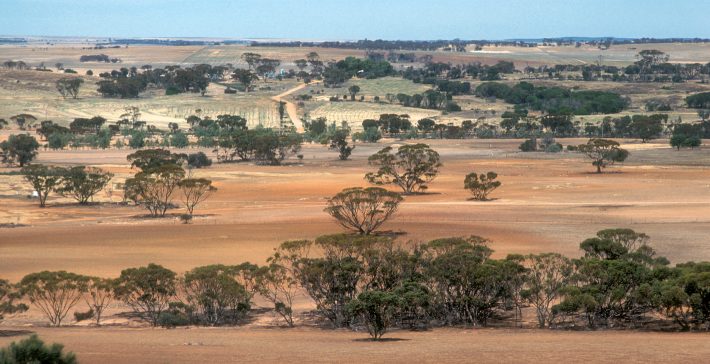University of Queensland press release.
Researchers propose a AU$41 billion nationwide plan for habitat restoration to prevent species loss that will pay for itself through carbon sequestration revenue. The findings are published in Journal of Applied Ecology.

The health and diversity of Australian ecosystems are in decline. The environment is under mounting pressure from land clearing, altered fire regimes and invasive species. Australian ecosystems are also extremely vulnerable to climate impacts with extreme temperatures and fires expected to become more frequent and more severe.
Australia's environmental legislation and policies have failed to tackle these mounting issues and there is a lack of adequate funding for environmental management, threatened species protection and ecological restoration.
Targeted restoration of degraded ecosystems has great potential to alleviate these problems. A promising approach is the restoration of non-primary agricultural land to lift native vegetation coverage. But how much would it cost to repair Australia's degraded ecosystems in this way? And could it be achieved without comprising food production?
The incentivised program would put cash into the hands of willing farmers and improve environmental outcomes.
In a paper published in Journal of Applied Ecology, researchers from the University of Queensland describe and cost a pathway to achieve 30% native vegetation coverage of almost all (99.8%) Australia's degraded terrestrial ecosystems on marginal farming land.
The researchers estimate that this restoration would cost approximately AU$2 billion annually (0.1% of GDP) for 30 years, or a net present value of $41 billion for the life of the project. This cost would be offset by the expected carbon revenue of AU$12-$46 billion which means under the optimistic carbon pricing scenario, which does reflect current market predictions, it pays for itself.
The cumulative carbon abatement is estimated to be 913 MtCO2e, with an annual abatement of 13 MtCO2e 10 years into the program. This is equivalent to 16% of the greenhouse gas emission reduction of Australia's Nationally Determined Contributions by 2030 for commitments to the Paris Climate Agreement.
Lead author, Bonnie Mappin, says "The incentivised program would put cash into the hands of willing farmers and improve environmental outcomes."
Coauthor Professor Lesley Hughes, founding Councillor with the Climate Council of Australia and a Director for WWF Australia, says "Restoration of native vegetation on marginal lands has enormous co-benefits for Australian biodiversity by improving habitat and the ecosystem services our species provide, and supporting jobs, especially in rural and regional communities. It's a win-win".
You can read the full article for free (for a limited time) here:
Mappin, B., Ward, A., Hughes, L., Watson, J. E. M., Cosier, P., & Possingham, H. P. (2021). The costs and benefits of restoring a continent's terrestrial ecosystems. Journal of Applied Ecology, 00, 1- 12. https://doi.org/10.1111/1365-2664.14008






